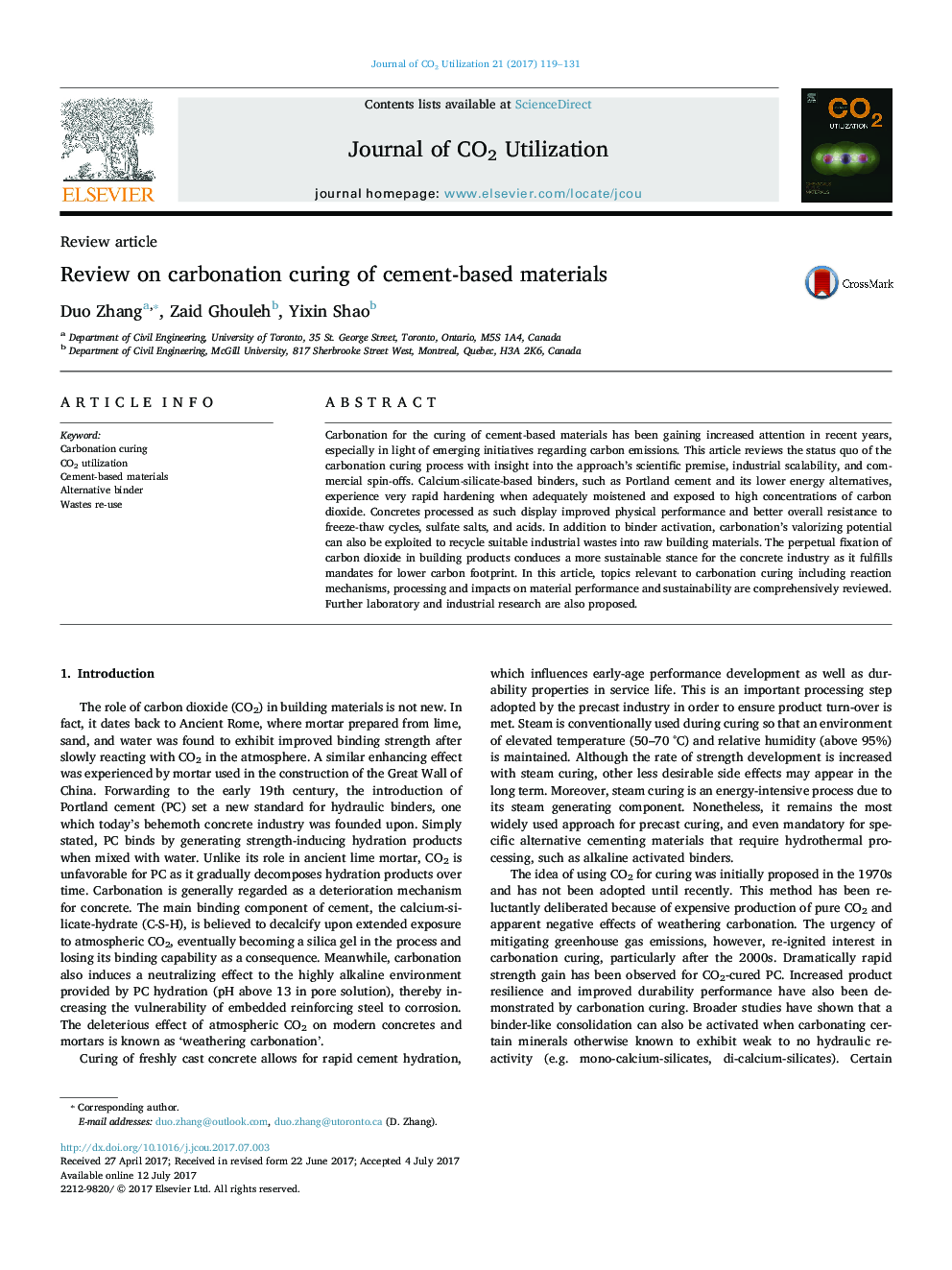| کد مقاله | کد نشریه | سال انتشار | مقاله انگلیسی | نسخه تمام متن |
|---|---|---|---|---|
| 6456030 | 1419841 | 2017 | 13 صفحه PDF | دانلود رایگان |
- CO2 can be used as a curing agent to improve performance of cement-based materials.
- Mechanisms, processing and material performance associated to carbonation curing are summarized.
- Lower energy minerals and suitable wastes can be activated by CO2 as raw building materials.
- Perpetual CO2 sequestration mitigates carbon footprint of construction industry.
Carbonation for the curing of cement-based materials has been gaining increased attention in recent years, especially in light of emerging initiatives regarding carbon emissions. This article reviews the status quo of the carbonation curing process with insight into the approach's scientific premise, industrial scalability, and commercial spin-offs. Calcium-silicate-based binders, such as Portland cement and its lower energy alternatives, experience very rapid hardening when adequately moistened and exposed to high concentrations of carbon dioxide. Concretes processed as such display improved physical performance and better overall resistance to freeze-thaw cycles, sulfate salts, and acids. In addition to binder activation, carbonation's valorizing potential can also be exploited to recycle suitable industrial wastes into raw building materials. The perpetual fixation of carbon dioxide in building products conduces a more sustainable stance for the concrete industry as it fulfills mandates for lower carbon footprint. In this article, topics relevant to carbonation curing including reaction mechanisms, processing and impacts on material performance and sustainability are comprehensively reviewed. Further laboratory and industrial research are also proposed.
Journal: Journal of CO2 Utilization - Volume 21, October 2017, Pages 119-131
